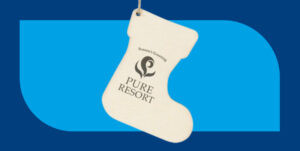08/01/2016
The Importance of Branding Your Company – and Using the Benefits to Benefit Others
When it comes to making a name for your business, longevity can certainly play a role in strengthening brand recognition. Just ask Loretta Knauth, Director of Corporate Alliance and Public Relations at United Service Organizations (USOHRCV). The USOHRCV has been around for over 75 years, but people still associate it with Bob Hope and World War II, the period in American history when the business got its start. But as Knauth knows, it takes diligence and care to transition an organization through the decades, and to maintain its relevancy in the eyes of customers, clients, supporters, and business partners.
First, a Background on the USOHRCV
USOHRCV of Hampton Roads and Central Virginia is a private organization that supports America’s military service members at home and overseas. They provide support – such as travel assistance and transitionary services for those moving back home – to those in uniform that bravely supported the United States. From enlistment through to retirement, they assist with enlisted soldiers, veterans, and military families through various stages and challenges of their lives.
Speaking of the origin of their organization, Loretta explains, “What President Roosevelt really wanted to do was unite service members and the community and different organizations together, to lift the morale of our military and try and nourish support at home.” Today, USOHRCV is one of the nation’s leading organizations that serve US Military members and their families at home and abroad. Their reach is far, with operations in 120 locations in the United States alone. Overseas, you’ll find USOHRCV operating in countries like Germany, Afghanistan, and Italy.
Marketing is Not a Business Expense, but an Investment
Explains Knauth, “We’re not part of the federal government, we don’t get government funding. We’re self chartered, we’re a private organization. We just rely on the generosity of individuals and organizations/corporations for activities, promotions, events, sponsorships.” Perhaps your business or nonprofit organization can relate? For many small companies, start-ups, and not-for-profits, marketing is not just a strategy, but a necessity to the bottom line.
Knauth advises, the more that you market and promote your business, the better you instill confidence and trust in your brand that helps with advertising and the support of your cause and mission. “That’s how we get our dollars,” she continues. “That’s why branding and promotion is so important for the USOHRCVHRCV.” It is through this integrated marketing approach ‒ spanning across outreach, promotions, sponsorships and more ‒ that USOHRCV and many businesses like it are able to be a sustainable organization.

Offering Gifts and Products with a Clear Advantage
One of the best ways to get your name out in the community is through branded products. There is an art to selecting the proper promotional items to benefit your business, and doing so is very much dependent on your audience and the occasion. If there’s one thing the USOHRCV prides itself on, it’s positioning their brand as the most advantageous through customized items.
Knauth provides the following example: “We have 40 thousand people attend [Warrior Week at Virginia Beach]. So what we do is, we have sponsors that help us do these events and we brand our products. So if you’re at Warrior Week, down at the beach, you have sand and you have the boardwalk, and it’s 95 degrees! What’s the best thing the USOHRCV can do? We have a booth there that’s a 10 by 40-ft space, where we have the active duty guys and their families come in and rest during the Warrior games.”
Her team chooses what products would be of value to the people they serve. In excessive heat on the beach, that’s sunscreen, chapstick, hand sanitizer, and handheld fans, all branded with the USOHRCV logo. Sunscreen and chapstick are also highly prized by those they assist who are serving abroad in dry, desert environments. Says Knauth, “That’s the way to position your brand to have a great impact, and the best way to spend a dollar. There’s going to be times you want a stress ball, there’s going to be times you need a logoed balloon – but there are times you need to identify what people want. What are they going to remember?”

When it Comes to Products, Quality is Everything
Knauth also stressed the importance of high value promotions in USOHRCV’s integrated marketing approach. Alongside identifying items of importance, the USOHRCV believes quality trumps quantity when it comes to promotional products for U.S. military members and their families. “At USOHRCV, we want to take care of our men and women in active duty. Every product that we give them… we want it to be the best. Because they deserve the best.”
When choosing the items to brand with your logo or message, Knauth offers, “You want to make sure you research your product, get it tested, make sure it has the good ingredients, and [consider] what is the SPF. Those type of things that you want to be known for. You don’t want to be known for an ink pen that never works. There’s value that you need to place in your products that has your logo on [it].”
USOHRCV’s determination to provide products of quality to U.S. military members and families is a great way to not only build rapport through their marketing strategies, but to show gratitude and compassion for those serving our country. Loretta reinforces this argument by adding, “The more you market that and the more you can do promotions that instills confidence and trust and that helps you advertise, support your cause and your mission, whether it’s a corporation, company, for profit or nonprofit, building your brand only helps the financial value.”
Understanding the Market to Better Cater to It
In this day and age, it’s easy to shop around for the cheapest product, placement, or advertising opportunity – but that doesn’t mean you should jump to take it. “If you’re just trying to saturate the market with your name,” Knauth articulates, that’s one thing. “If you want to target, focus, try and rebuild, have a financial investment that will also yield a financial return. If you’re going to throw money at advertising without understanding the bigger picture of marketing, that doesn’t mean you’re going to get a better return.”
In speaking to thoughtfulness and consideration in marketing, Knauth provides another unique example: McDonald’s. No matter what they do, she argues, the public thinks they have the best French fries. “People don’t care if they have more salt or sugar or whatever. But they think they have the best fries because they spent so much time marketing that and putting it out there; giving free fries for every event. People perceive that because it’s been done for so long. You have to be consistent ‒ and it may take one year, two years to be consistent in your messaging, your branding, your image, your quality. You have to dedicate a portion of your marketing dollars to that and diversifying it.”

Connecting Marketing, Promotions, and Branding – and Getting the Whole Team Involved
Something businesses don’t consider enough is that it’s not just about getting your customers onboard, but your employees and executives, too. “Putting a system in place and making sure your employees understand, so your customers or target audience understands,” is of utmost importance when discussing promotions and marketing strategies. This is especially true for companies where there are many different products or services being marketed, and a variety of branded messages being sent through traditional and digital media outlets.
What’s more, internal departments must work in tandem to achieve their goals and objectives – especially when these operations tend to overlap or intertwine. “The one thing that you will notice about any nonprofit,” says Knauth, “[is] everybody has multiple hats.” As Director of Corporate Alliance and Public Relations, her position is a full-time role that encompasses the challenges and needs of their marketing department. Yet in her experience, marketing, PR, and branding all go hand-in-hand. Each component is essential to the business’ success, and no one element is very productive without the other two.
“When people are thinking ‘OK, we have money for advertising,’ are you saying you have money for digital media, radio, are you doing TV? Or are you saying you’re doing advertising with promotional products? I think people group that together, and I don’t think they should.” Knauth speaks about the need to focus on your target objectives, and determine if there is a carry-over benefit from one activity to another.
“If you’re putting your money in just advertising on TV, well that’s great… But it’s totally different if you’re trying to get in a home, in a car, [or] trying to get into somebody’s hands…” And there are plenty of nuances to consider in each of these options. How often will your customer see or hear your name? If they receive an item, will they use it, or throw it away? What action do you want the recipient to complete upon seeing your organization’s name or hearing about it on television or the radio?
Each of your business’ departments have to talk to ensure that all three aims are strong, creative, and well thought out. After all, that investment in advertising is an investment in your business’ future – and its longevity feeds right back into your brand’s recognition and credibility, in the continuation of a never-ending loop of exposure and success.
Thank you, Loretta, for sharing your story and advice with us! To learn more about the USOHRCV and support their mission and marketing efforts, visit their website or follow along on social media.






